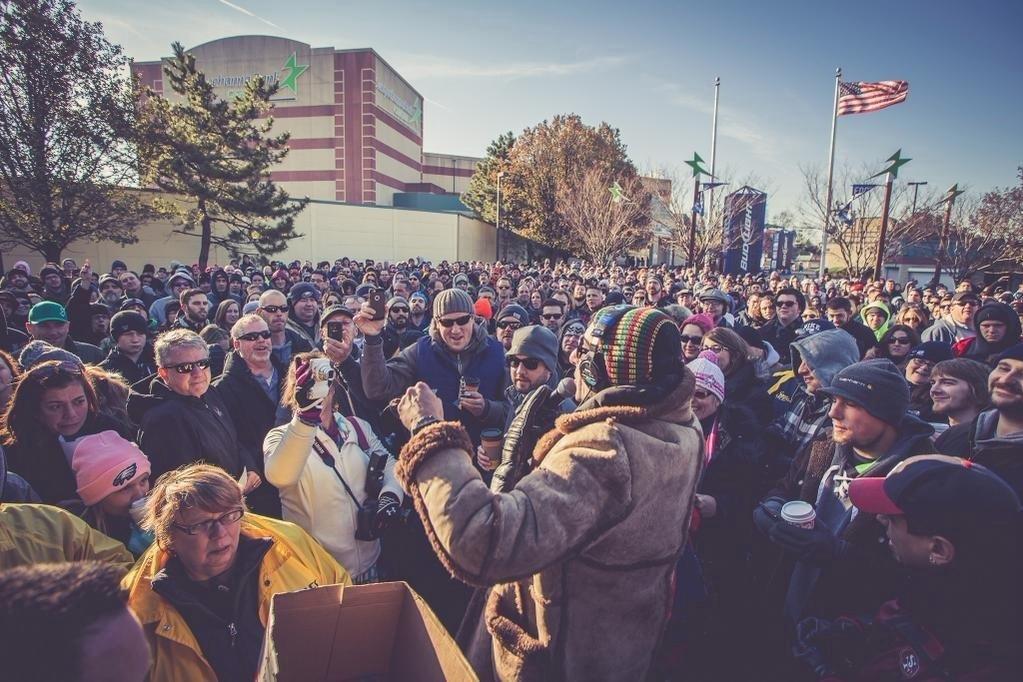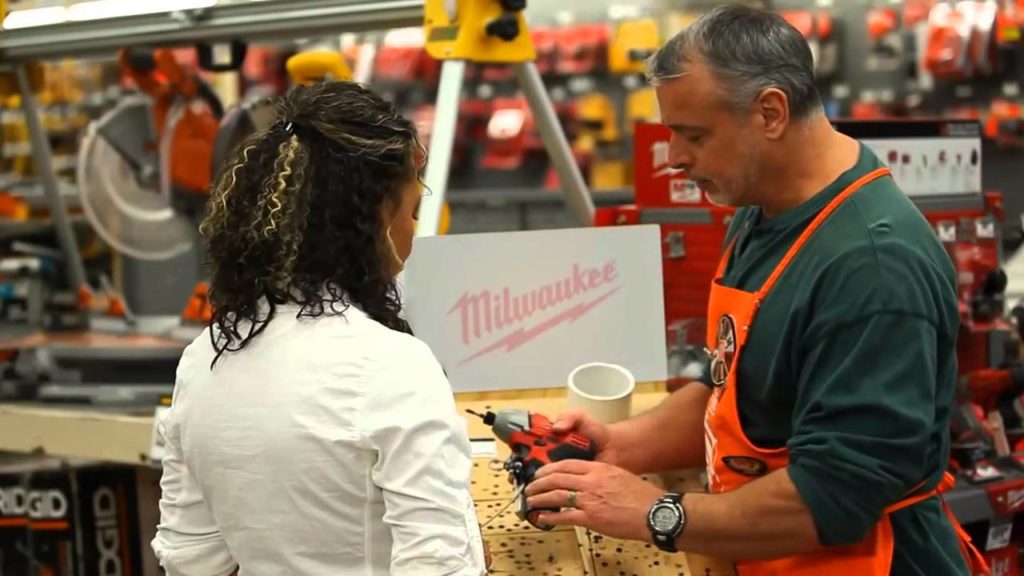
In radio, one of the eternal challenges revolves around how to convert P2 listeners into P1s – fans, followers, loyalists. And in fact, we know that all P1s are not created equal. Radio brands – in a perfect world – are attempting to build tribes – Super P1s – audience members who will share your assets and your story with others by word of mouth and socially.
But not surprisingly, it turns out this is a common problem in many industries, including retail. An article – or more to the point, a challenge – written by Matthew Stern in Retail Wire. “Why does Lowe’s seem to have a problem turning shoppers into customers?” explores the problems the nation’s #2 home improvement big box chain faces up against Home Depot.
Stern points out how Lowe’s stock is in decline, pointing to lower store traffic as a culprit. But it runs deeper than that because not enough people who walked into their stores ended up purchasing high margin items.
Worse yet, this performance puts Lowe’s even further behind its nemesis, Home Depot. Interestingly, Lowe’s has made significant investment in technology. They now have a robot-like in-store assistant, LoweBot, similar to those we’ve seen and talked about at CES.
And they’ve rolled out the Holoroom, a sort of virtual + augmented reality feature that helps customers visualize their home improvements, as well  as demos. And they even have an in-store navigation app, as well as other features that use some of the latest tech innovations.
as demos. And they even have an in-store navigation app, as well as other features that use some of the latest tech innovations.
Stern posed the Lowe’s dilemma – the inability to convert shoppers into purchasers – or P2 into P1s – to a group of 22 marketers, strategists, CEOs, and executives – or the “Brain Trust.”
And interestingly enough, they tended to be in lockstep with one another about Lowe’s failure to create enough DIY fans. While several lauded the company’s efforts to stay ahead of the times with technology, Tom Dougherty, President and CEO of Stealing Share, notes that transforming lookers into buyers goes well beyond having “an app for that.”
Many others – like Matt Henderson, biz dev manager for Retail Architecture – points to an even more important aspect than the digital/retail improvements Lowe’s has made: the personal touch. In the DIY market, shoppers are in need of advice and tips, rather than VR, AR, and bots.
That sentiment is echoed by Ken Donyal, a consultant/strategist who focuses on UX. He reinforces the point that Lowe’s investment in technology means nothing if it doesn’t answer customer needs. And these digital tools aren’t necessarily conversion tools, but instead are features.
The solution? Steve Montgomery, President of b2b Solutions, makes the much-stated point that Lowe’s could turn more shoppers into fans with more salespeople on the floor who are knowledgeable and generous with their time.

And if that sounds like an issue that faces radio at this moment in time, you and I are on the same page. Yes, radio’s reach continues to be impressive, especially among Xers and Boomers, but how many of those cumers are truly fans, versus those who graze through stations, on their way to satellite radio, Spotify, and podcasts?
Many radio companies are making six-figure investments in technology – apps, Alexa skills, podcasts, websites, systems, connected cars, and even drones. Like Lowe’s they are looking to technology to gain an edge over the competition.
We support these efforts, bolstered by research like Techsurvey and Infinite Dial. For serious broadcasters, these investments in digital personnel and tech tool kits are table stakes. To keep pace with the growing audio competition, radio simply has to focus on innovation and technology.
But not at the price of people. Smaller staffs, more voicetracking, less on-the-street activity, and less research that truly studies audience needs can’t be sacrified. It’s not radio has shifted from a people-intensive business into a hi-tech media outlet.
To effectively build fans, radio needs to work even harder on developing personalities – and not just in morning drive. That tribal, passionate crowd gathered around WMMR/Philadelphia’s night guy, Jacky Bambam isn’t an accident, a coincidence, or a one-off.
Jacky was the live overnight jock just a couple years ago, where he earned his chops, built his following, and connected with MMR fans. Now he’s on at night, embracing his core audience and the city and culture that is quintessentially Philly. Jacky is a tireless ambassador for the station, and fits perfectly into an airstaff comprised of superstar personalities loved by a market that doesn’t automatically give out hearts and flowers for any medium or brand. In Philadelphia, loyalty must be earned.
WMMR – like other leading music radio stations – has blazed a more costly, precarious, but ultimately more sustainable and rewarding trail by investing in talent, resources, infrastructure, and customer service. Sure, they have a great app, Alexa skills, and the other mandatory tech toys and features.
But without its people, MMR’s ability to connect with fans, friends, and followers would be merely average. As we consistently read in our industry trades from consultants in formats like CHR, Hip-Hop, Country, and others, music cycles. You ride the highs, the lows, the peaks, and the valleys. How many CRS panels relentlessly debate the nuances and in’s and out’s of country music and its trajectory? How many sports talk stations are overly dependent on the home team winning championships? How many pop and alternative stations endlessly wrestle with the rollercoaster ride of new music?
Stations that consistently win invest in people, and that helps them ride out the droughts, as well as the unanticipated problems faced by their parent companies, weather emergencies, and other uncontrollables that threaten success from quarter to quarter.
Like Lowe’s dilemma, putting your chips on technology at the expense of trained, helpful, and engaging talent (that is, your true salespeople), radio faces the same big challenge.
 I know some of you may be thinking that perhaps Home Depot’s stronger position in the home improvement market just may be due to their pole position as a consistently heavy radio advertiser.
I know some of you may be thinking that perhaps Home Depot’s stronger position in the home improvement market just may be due to their pole position as a consistently heavy radio advertiser.
I’d like to believe that’s part of the story, and perhaps Lowe’s would be better off sinking more into a grassroots medium like radio. But it’s Home Depot’s sales associates approach focused on men and women who have worked in the trades, wearing those signature bright orange vests. They not only help you navigate the store, but guide you through the process of doing it right. You don’t have to virtually imagine it – they walk you through it.
It’s the customer experience – walking into the store, being greeted and helped by a friendly expert who understands the terrain, asking questions and getting informed answers – that’s a priceless commodity, even in an era dominated by technology.
Just like on the radio.
- What To Do If Your Radio Station Goes Through A Midlife Crisis - April 25, 2025
- A 2020 Lesson?It Could All Be Gone In A Flash - April 24, 2025
- How AI Can Give Radio Personalities More…PERSONALITY - April 23, 2025




Leave a Reply